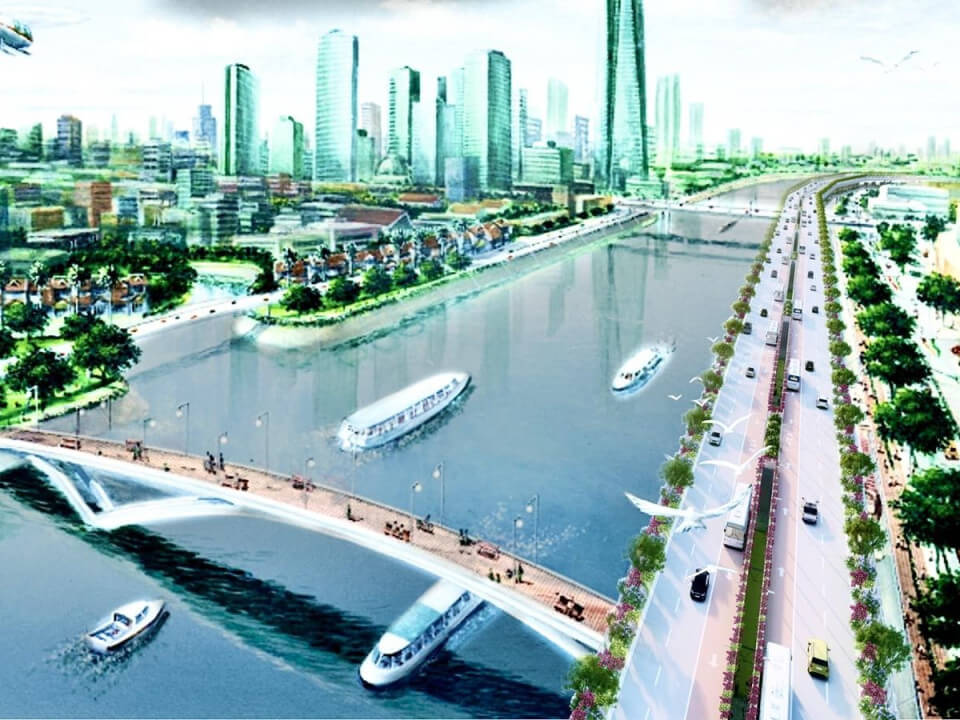

The Pasig River Expressway (PAREX) is a prime example.
The project was conceptualized in the mid-1990s under a Japanese government-sponsored study. But once San Miguel Corporation showed some serious interest in actually building it, is began to face strong opposition from groups who have rallied architects, conservationists, and mobility advocates against it.
Stakeholders with no voice
But practically absent from this cacophony are the voices of those who live in the affected areas and experience the daily congestion the project aims to address.
This detachment from the everyday challenges faced by local commuters highlights a certain privilege, affecting their perspective on the infrastructure needs of those who endure traffic gridlocks daily.
In our country's typical political landscape, such tactics are common, designed to sway public opinion.
The primary target of this criticism is the project's proponent, painting PAREX as a project more harmful than the pollution within the Pasig River itself.
This is cancel culture, ignoring the needs of millions suffering daily traffic in Metro Manila. And just like other forms of cancel culture we see on social media, it overemphasizes one aspect of the issue to the exclusion of other voices and opinions. To the critics, there’s no room for dialogue, negotiations or compromise. I should win, everyone else should lose. Simple.
San Miguel has shown willingness to listen to all sides. Its chairman and CEO Ramon Ang acknowledged the some group's desire for riverside parks but emphasized the needs of millions who'd benefit from the expressway.
To balance this, San Miguel plans to integrate walkways, bike lanes, and a bus rapid transit system into the design.
Naturally, however, critics’ views, while important, do not represent everyone.
Misinformation, disinformation
Some incorrectly claim PAREX would encase the river, which is illogical and impractical given its design to utilize already compromised riverbanks — areas already compromised by industrial encroachment and informal settlements.
Accusations that PAREX would "destroy" the river and heritage are disconnected from reality. Would a regulated conglomerate committed to sustainability deliberately destroy a vital waterway and risk a public relations disaster?
Critics propose parks and esplanades, but these would mainly serve recreation that would only benefiting a few rather than the broader population who rely on efficient transportation to commute to work and other essential destinations.
Such projects, reliant on government funding or fragmented support, face delays and potential corruption.
It's more likely San Miguel, having already invested P2 billion in the river’s cleanup, would continue these efforts. They could partner with local governments, nonprofits, and even polluting industries to truly rehabilitate the river.
Facts ignored
Yet, detractors dismiss the project before plans are final. Their premature judgments — that the expressway would obscure the river, disrupt parks, or mar heritage sites — are based on speculation.
Many view San Miguel's cleanup as a "sweetener" for PAREX, ignoring Ang's personal leadership in similar efforts nationwide, extracting millions of tons of waste from rivers in various provinces.
Anti-PAREX groups also dismiss San Miguel's promises of continuous cleanups, bike lanes, walkable areas, and a bus rapid transit system, deeming them "too good to be true."
But when have we had something this comprehensive? Many opponents seem to dislike infrastructure, considering it unsightly, despite our streets, vistas, and communities often lacking cleanliness and planning.
We dream of Singapore- or Japan-like infrastructure. Yet, now that it's possible, some oppose a multimodal project with access for vehicles, public transport, bicycles, and a built-in chance for river rehabilitation.
They want to "protect" the Pasig (sadly, an long running outlet of liquid and solid waste since time immemorial) with esplanades and parks. Who will fund this? The government? Expect delays and inefficiencies. Private partners? Expect token efforts or a profit-driven agenda.
This raises the question: Is the goal to improve mobility or just block PAREX? All modes of transport represent the public, we can't champion one and forget the rest.
PAREX isn't just a San Miguel project. It's a government-approved project that was conceptualized to address a public need.
To be certain, it’s not the sole solution to traffic. But it is one of a host of solutions that true mobility advocates work towards.
PAREX will help make travel easier for everyone, whether you're driving a private vehicle or commuting on public transport. And it’s not just propaganda.

Senior Reporter

